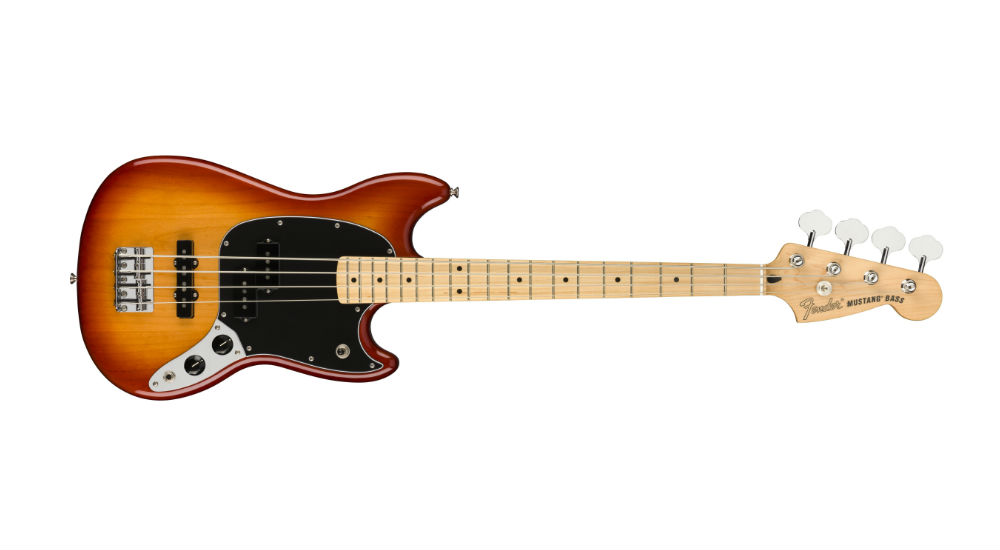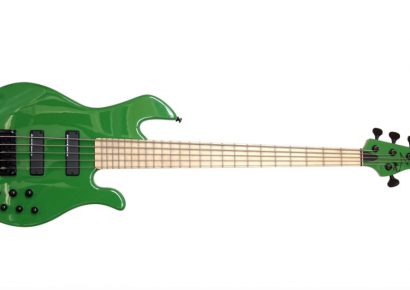The Mustang bass was first introduced in 1964 as a student model to join their Fender Precision and Jazz basses (denoted as ‘P’ basses and ‘J’ basses respectively among musicians). Never reaching the immense popularity of it’s older siblings it did, however, draw a niche following thanks to it’s percussive sound and easy playability, both thanks to it’s short scale (30 inch) neck. After first being reissued in 2002 after a 20 year absence it has gone through a minor renaissance as an appealing alternative to bassists looking for something different to the ubiquitous P and J, or just needing an instrument that doesn’t call for hands the size of dinner plates.
This all brings us to the Player Mustang Bass PJ. In terms of changes, most notably gone is the svelte split single coil exclusive to the original Mustang Bass. In its place we are greeted with the Tonka truck aesthetics of the P bass split coil and Jazz Bass single coil, in middle and bridge positions respectively, slammed in to the guitar sized body. Aside from the pickups, the Pau Ferro fretboard departs from the classic Mustang Bass formula. Although lighter in appearance and with more figuring than the classic rosewood, it is a close sonic match. Feel is drier than the familiar oily texture of the rosewood but combined with the satin finish neck this certainly gives then sense of a faster playing bass than the original. Gone as well is the large string-through bridge of the original with a modern top mount in its place. Purists will lament the perceived loss of sustain and it’s hard to argue that this choice by Fender is anything other than a financial one but considering the price and overall quality of the instrument it’s only a minor detail.
In terms of quality, this Mexican made addition to the Mustang Bass line up is a definite jump from its Squire stable mates. Build quality is solid, as expected of all contemporary Fenders, but maybe most notable is the quality of hardware for an instrument of this price range. Tuning stability is exceptional and volume and tone controls a perfectly linear throughout their rotation. This is matched with above par tonal flexibility thanks to the two pickups, although individual volume pots as found on the J bass would be a welcome addition.
As far as playability goes, the Mustang is, as ever, a joy. The overall smaller size gives a definite sense of fun to the instrument although, like all Mustang Basses, it lends its self to a neck heavy balance. The short scale also brings with it a decreased string tension, requiring less fret pressure even with the good-not-great factory setup.
This is where the Mustang PJ’s true character comes through as the perfect instrument for the low frequency curious. In fact, it’s hard to think of a better choice for someone who plays bass as their second instrument or a bassist wants to move on from a beginner’s instrument to something that will serve them well across a variety of genres. You really can ballpark, if not nail, the majority of tones required and, especially for guitarist, the short scale makes for a less punishing learning curve. Get it in Cheetoh dust orange or gold to prove to your detractors the you can be practical without being boring.

